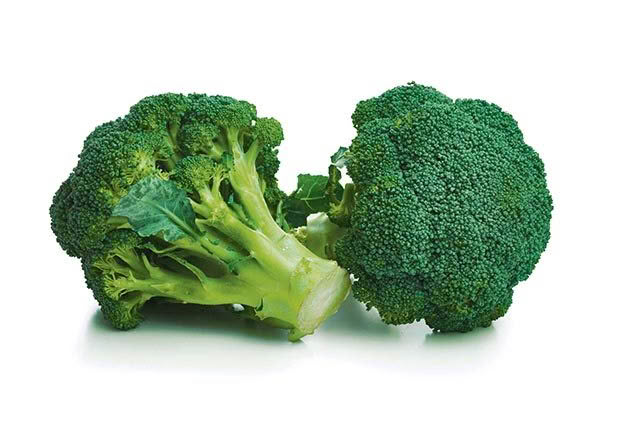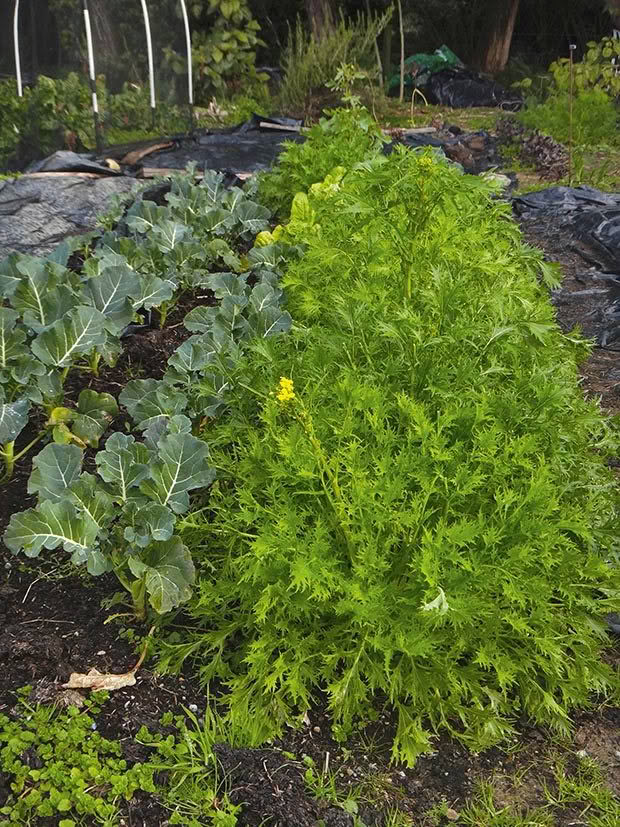New Zealand growing guide: 9 tips for your best-ever broccoli crop

A good system means a good harvest of an essential veggie.
Words: Jane Bellerby
Broccoli is one of the favourite and most essential of green vegetables in our home. We grow them from March until late spring, with regular sowings to ensure crop continuity.
It’s possible to grow it through summer but we’re busy enjoying other seasonal vegetables that require less maintenance during the season, so we don’t have to worry about those pesky white butterflies and diamond-backed moths.
Over the years we’ve honed our broccoli growing system and this is the current plan. Note, it’s always open to reinterpretation and adaptation.

1. Usually a whole bed, approximately 5m x 5m, is prepared with well-rotted horse manure (or sometimes, cow manure), lime (applied at a different time so as not to impede the uptake of fertility), and a good digging if necessary.
2. The plot is then covered with black plastic for weed control.
3. As sowing commences, the black plastic is rolled back row by row. We sow every two or three weeks, a couple more rows as needed. This regular sowing stops for the month of June then recommences in July until mid-spring.
4. The germinating seeds are kept moist and we try to pay careful attention to weed control. All our hard work is not for the benefit of the opportunist weeds so any bare patches in germination can be filled by transplanting plants that are growing too closely together.
5. To help with weed control we plant the rows closely together so as the plants grow they shade out weeds and provide a bit of living mulch to help with moisture retention. Mulch is not used over winter because it just creates too much of a holiday resort for slugs and snails.
6. Row maintenance, aside from weed control, includes watering in any dry spells and paying attention to the state of the plant.
7. A side dressing of general garden fertiliser and/or liquid fertiliser is often necessary to maintain even growth.
8. As plants mature and the main broccoli heads are harvested, we then eat the shoots that pop up before pulling the plant and either resting the soil or beginning to sow another crop. Leaving the spent plant which continues to grow just robs the ground of more fertility. Often carrots follow brassica crops because the heavy feeding given to the broccoli bed is ideal for carrots that don’t like fresh manures.
9. Pest on broccoli and most other brassicas can be disheartening, discouraging and devastating which is why we grow broccoli through the autumn and winter months. Having said that we also use BT (Bacillus thuringiensis) in the shoulder seasons when the butterflies are about.
ABOUT BT
Bacillus thuringiensis (BT) is an organic insecticide that contains a naturally-occurring bacterium found in soils throughout the world. It is not a chemical and has never been found to hurt humans or anything else except the targeted caterpillars. It breaks down relatively quickly, returning to the soil with the help of UV and micro-organisms.

Mizuna plants and staggered broccoli plantings.
BT is activated only by specific conditions that exist in the gut of the caterpillar. Not so nice for the caterpillar of course, but if we want to eat broccoli, they need to go.
It doesn’t affect fish, bees or other insects, and the only downside is it limits the food supply of birds which may have to forage further afield than your garden.
It is widely used on conventional and organic crops, with no withholding period required before sale or consumption. BT doesn’t grow in warm-blooded organisms, instead passing through digestive systems without producing any toxic effect.
In extensive studies of its use over the last 30 years, both commercially and in private gardens, BT has shown no adverse effects on anything but the caterpillars.
BT is available through garden supply shops.
Love this story? Subscribe now!
 This article first appeared in NZ Lifestyle Block Magazine.
This article first appeared in NZ Lifestyle Block Magazine.
